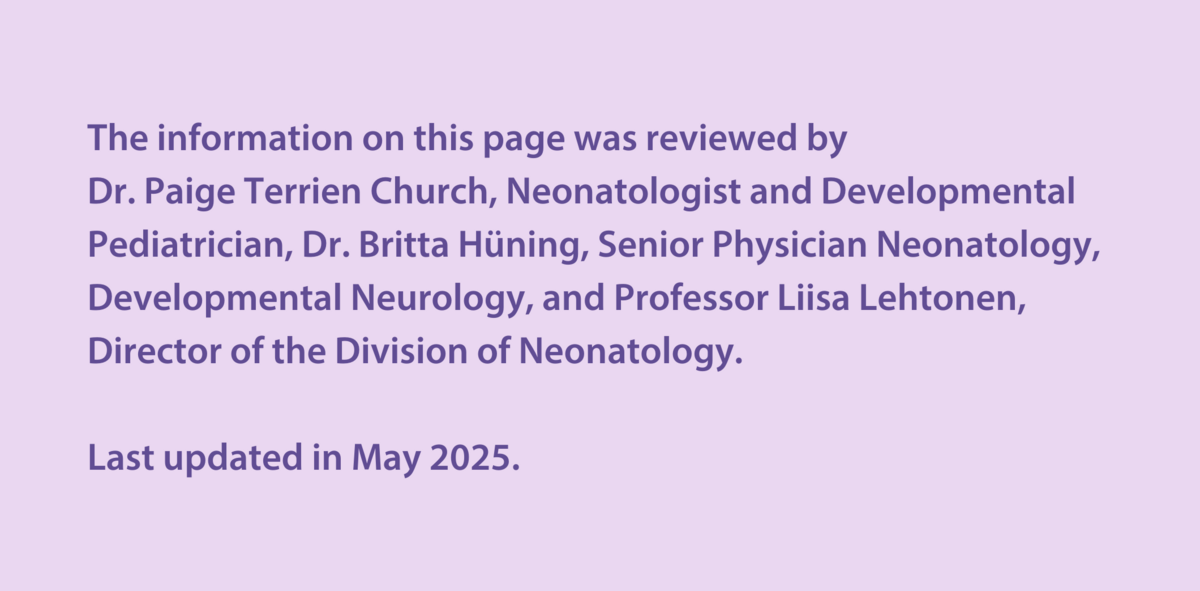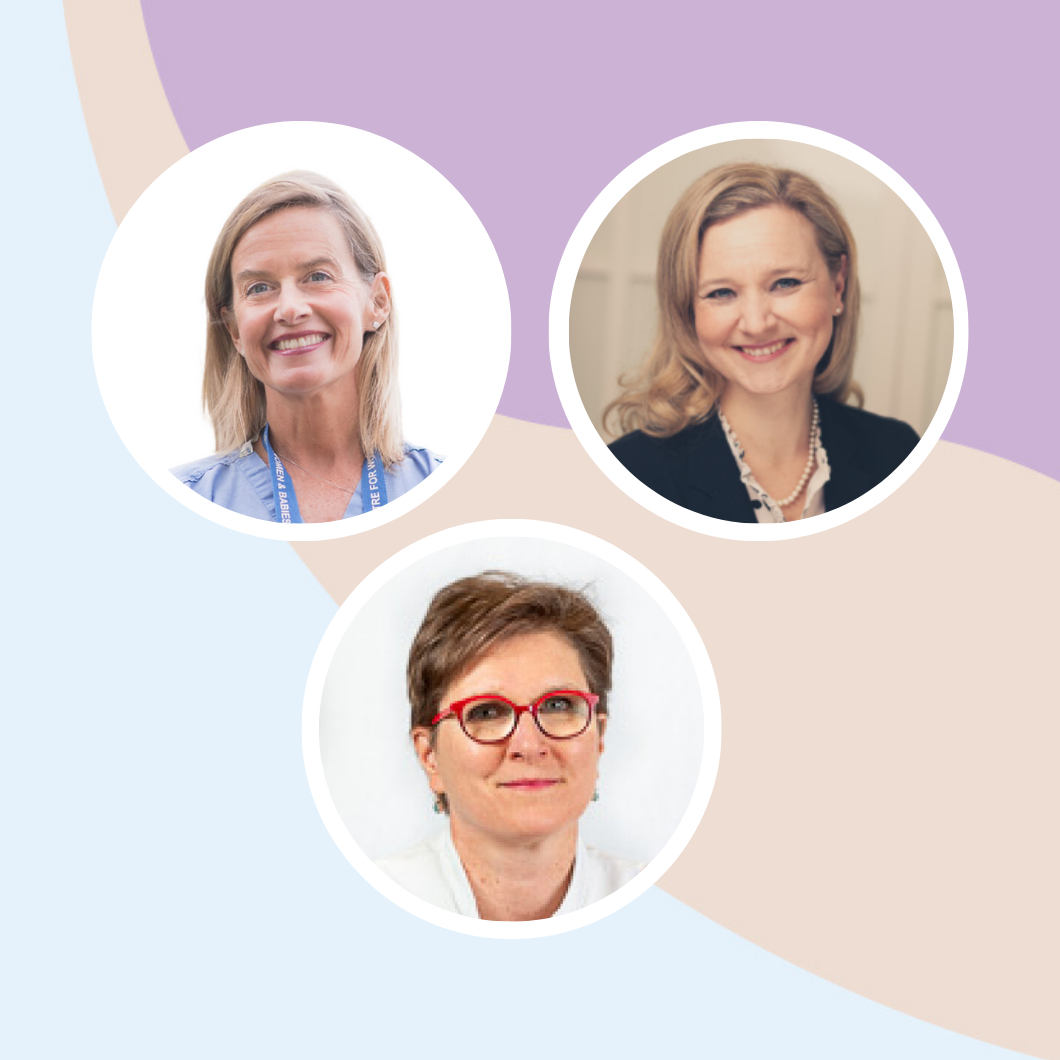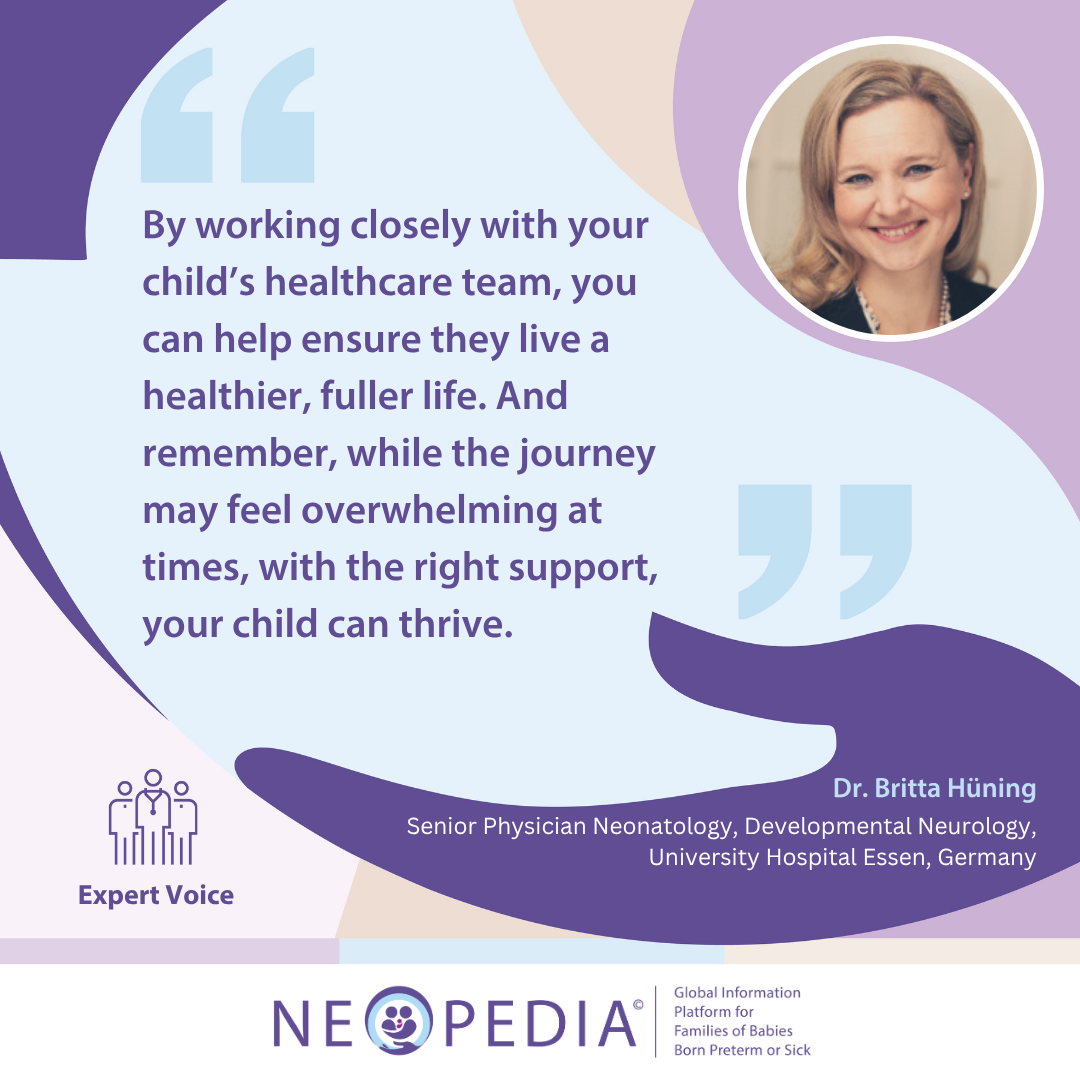
It can be hard to recognize if health problems in children are caused by being born early. However, we know that preterm birth or needing special care in the neonatal unit can increase the likelihood of long-term health challenges, even as your child grows into adulthood. That is why it is so important to share with all your child's doctors that they were born preterm or had health concerns at birth. Their pediatrician⍰ should have access to their full medical history, both before and after birth, to provide the best care possible.
Some challenges linked to preterm birth or time in the neonatal unit are temporary and improve with time, while others may be more lasting or can even come back in teenager age or early adulthood. Many heart, lung, and eye diseases can appear first only in young adulthood, even if they were never an issue before. The earlier a baby is born, the greater the risk of complications also later in their lives. As your preterm baby grows, they may face ongoing health challenges or conditions that affect their lungs, eyes, or other organs, and can cause breathing, sensory, or vision difficulties.
But catching and addressing health concerns early on can make a big difference. Avoiding smoking and nicotine products is important for better health, especially for preterm-born adolescents. Sports and physical activities are also great, improving breathing, heart health, muscle strength, coordination, and mental well-being.
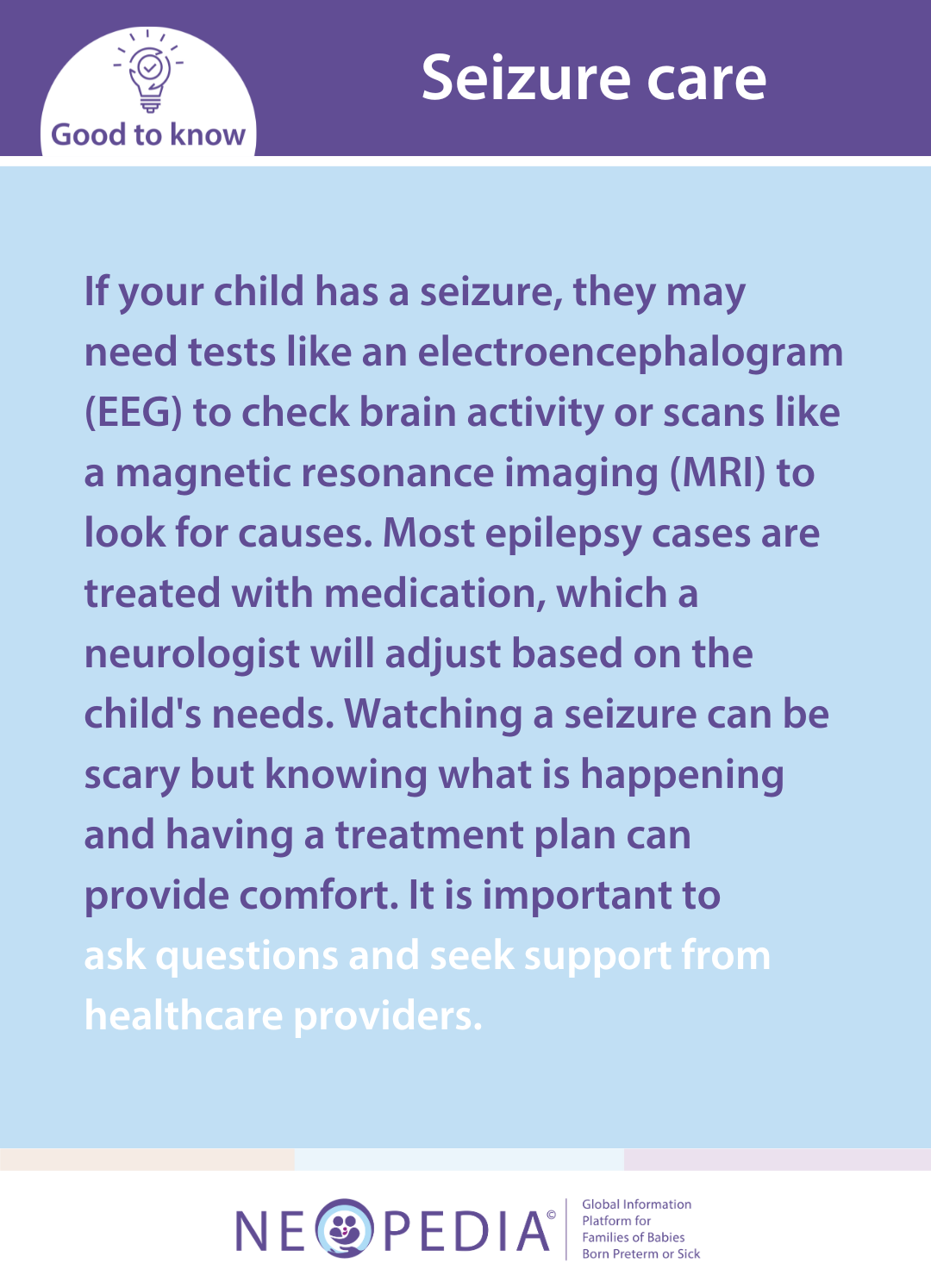
Seizures happen because of sudden changes in the brain’s activity. They can cause a child to move differently, act in an unusual way, or feel confused. Seizures usually last a short time and stop on their own. Having one seizure does not mean your child has epilepsy, which involves having repeated seizures without a clear trigger.
Seizures can be caused by things like fever, injury, or medicine. The most common type is a febrile seizure, which happens when a child has a fever – particularly a sudden rise in temperature. If your child has a seizure, it is important to call an emergency line and see a doctor to make sure everything is okay.
There are many kinds of epilepsy, and each person’s experience is different. Some children may outgrow their seizures, while for others, epilepsy may last their whole life. Most people with epilepsy can control their seizures with the right medicine. In most cases, the exact cause of epilepsy is not known right away. Doctors will need to do more tests to find out what might be causing the seizures.
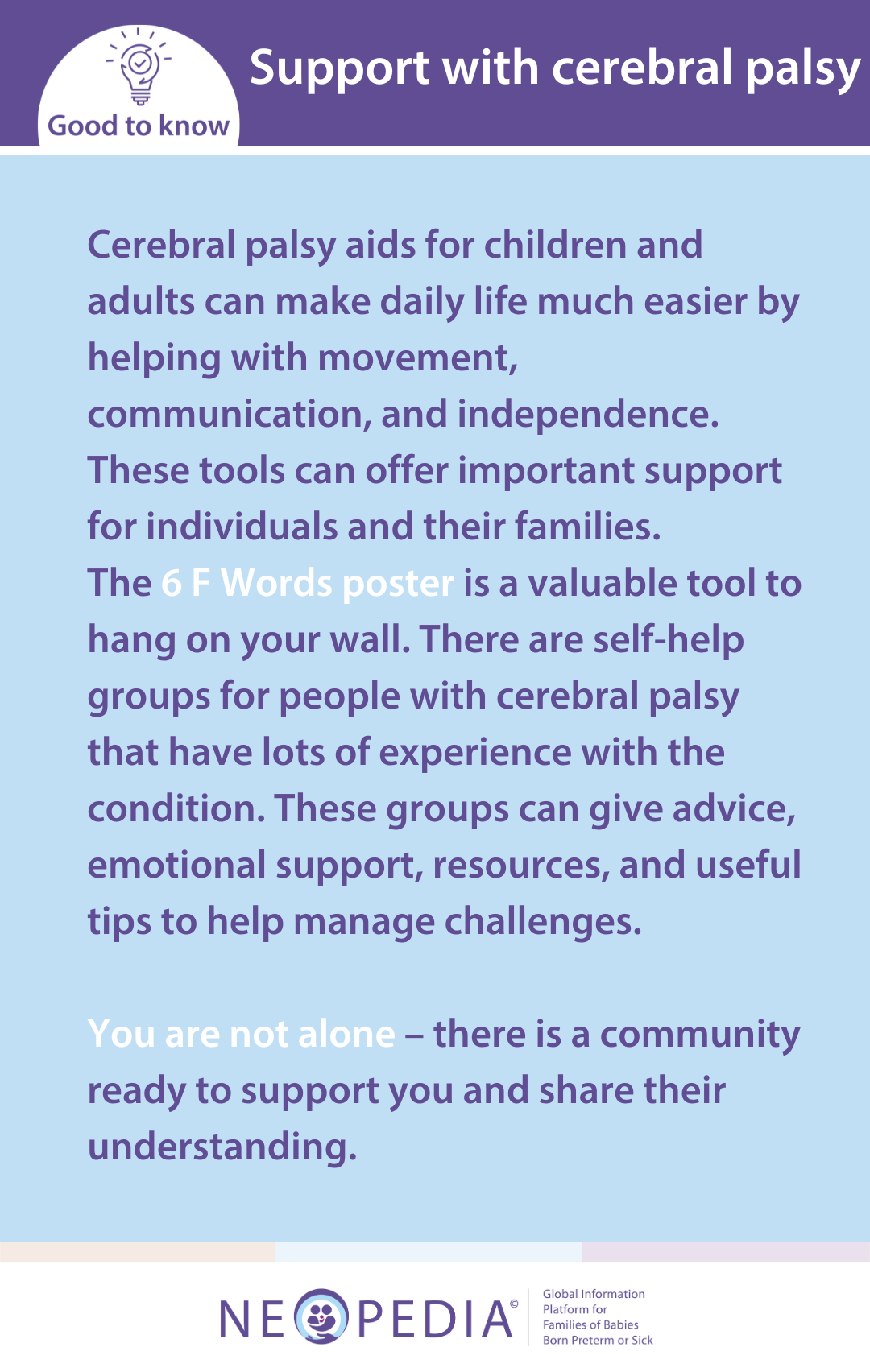
Cerebral palsy is a condition that affects a person’s movement and posture. It affects about 1 in 700 births and being born too early or very sick increases the possibility. It is important to know that cerebral palsy describes this pattern of how a person moves and there is a range of possible presentations. Many people with cerebral palsy can move independently, but may need assistance with therapy, or devices to do so. Cerebral palsy does not describe how your child will learn and many people with cerebral palsy are smart and can learn as well as others.
Early identification and therapy are critical, as this will offer the child the best chance to have a life that is rich and meaningful, minimizing challenge. In most cases, the exact cause is unknown, and while there is no cure, support is available to help manage the challenges in daily life.
Starting school can be a difficult and emotional time for both you and your child with cerebral palsy. It is important to lean on your child’s healthcare team for guidance in finding the best path forward. Remember, taking care of yourself is just as important.
You know your child best and should follow your instinct as this transition unfolds. Feeling supported and in control can make a big difference for both you and your child’s well-being.

Children use their senses to understand the world around them.
Most of us know the five senses:
But there are up to eight senses that we can count. The other three are:
Preterm babies start experiencing the world differently in the neonatal unit, where there are extra sounds, lights, smells, tastes, and touches. These early experiences can affect how they respond to sensory input later, which can impact their movement, behavior, and social skills. Neonatal units support babies by avoiding loud noises, while encouraging parents to talk or sing to their baby. They also avoid bright lights that could hurt the baby’s eyes, instead promoting eye contact with parents. Painful procedures are minimized, and gentle touch, such as Kangaroo Mother Care⍰, is encouraged.
Some children may have trouble handling sensory information as the result of their early experiences (or for other reasons such as a family history of challenges in this area). They may be too sensitive (covering their ears at loud sounds) or not sensitive enough (not noticing pain). When this happens a lot, it can affect how they act, learn, and interact with others, making everyday life harder.
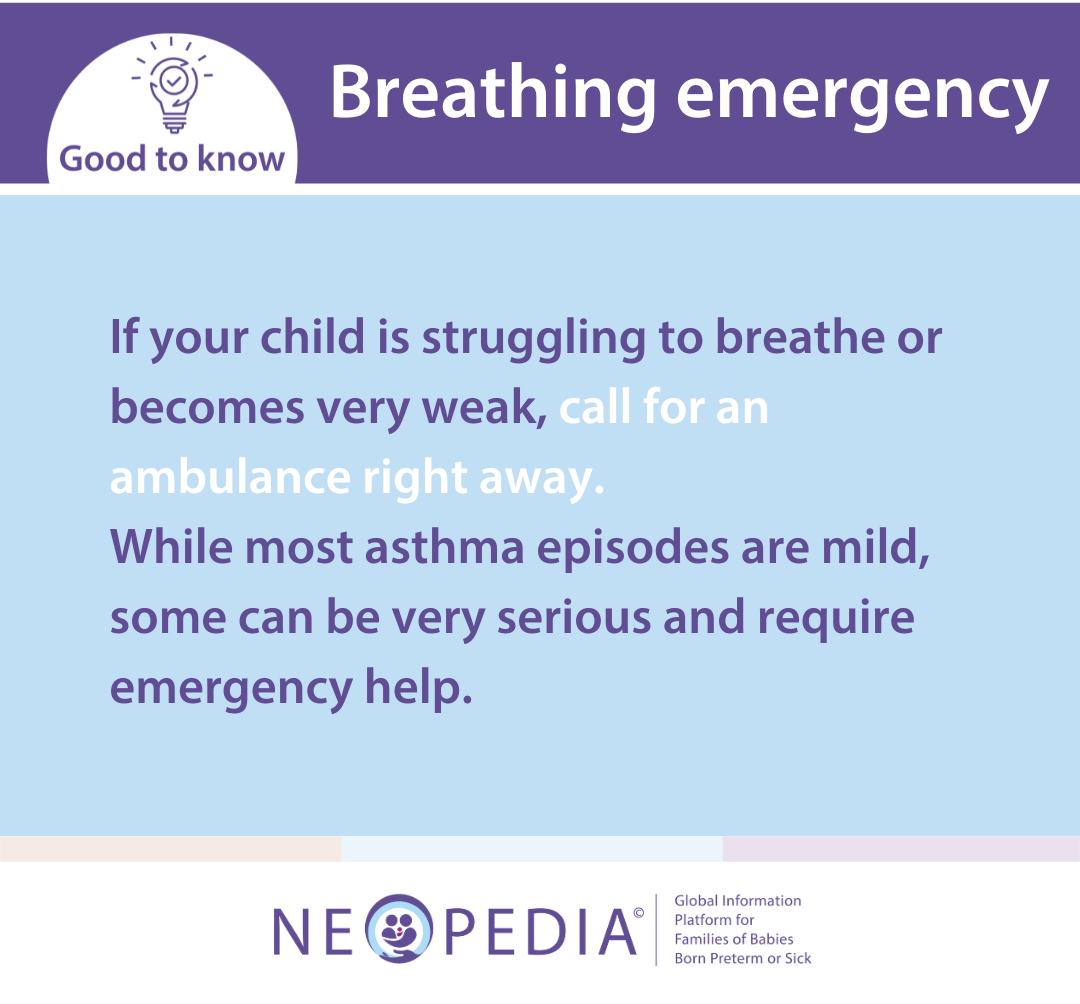
Keeping children’s lungs healthy is important. Make sure they eat well, avoid air pollution⍰ and cigarette smoke, practice good hygiene, and stay up to date with their vaccinations⍰. Some children, especially those born preterm, may have weaker lungs, which can lead to problems later.
Respiratory infections are common in school-aged children, but sometimes they can become serious. Usual symptoms include a runny nose, sore throat, cough, fever, and wheezing. Since many symptoms are similar, it can be hard for parents and teachers to know which illness it is, therefore it is important to watch for signs of breathing problems, like struggling to breathe, blue lips, or fast breathing. If these symptoms are severe or do not go away, call and emergency line for medical attention, and if your child keeps getting sick, it is important to see a doctor or go to the hospital.
Asthma
Asthma is a common condition that affects breathing. Asthma can be triggered by things like pollen, dust, smoke, cold weather, and exercise, making it harder for the child to breathe. It can run in families. When children with asthma are around triggers, their airways swell up and make more mucus, causing difficulty breathing. Symptoms include breathlessness, chest tightness, coughing, and wheezing.
If you think your child may have asthma, see a doctor for a proper checkup. Share any important health details, including if your child was born early. Keep track of what might trigger their symptoms, like smoke or cold air, as this can help the doctor diagnose and plan treatment. Although asthma cannot be fully cured, with the right treatment and care, your child can manage the symptoms and live a healthy, active life.
Chronic lung disease
Chronic lung disease, or Bronchopulmonary Dysplasia (BPD), describes the different lung development that happens after preterm birth. Children with BPD might need frequent hospital or outpatient office visits, often experience wheezing or asthma, and might not be able to exercise as much. BPD can also affect the child’s muscular development which can impact learning. Children with BPD have been reported to have less robust attentional skills. Parents are encouraged to work with a team of doctors and educators can help address these issues and support their growth.
As children with chronic lung disease get older, they often have fewer hospital and outpatient office visits and less wheezing. Many will have fewer breathing problems and a good quality of life. The disease is usually most noticeable when kids are very young, but many symptoms improve by age 2 or 3, with treatments often ending during school age. As children grow, their lungs also grow stronger and healthier, though some might still have breathing issues as they get older. Regular check-ups, vaccinations⍰, and visits with a specialist are important to help manage their health.
Children with chronic lung disease may catch colds and the flu⍰ more easily, and these illnesses can be more serious and take longer to recover from. Regular hospital visits may be needed for those with more severe lung disease. It is important to talk with your doctor about the condition’s severity, treatment options, and how to manage it long-term. Protecting your child from smoke or pollution⍰ and keeping good hygiene practices can help. Keeping a record of your child’s medical history can also make managing their health easier. Most children with chronic lung disease will see their symptoms improve as they grow, but staying in touch with healthcare providers is key to supporting their ongoing well-being.
A large number of adults with a history of BPD (bronchopulmonary dysplasia) are diagnosed with early-onset COPD (chronic obstructive pulmonary disease), even if they have never smoked or been exposed to common risk factors. Smoking further increases the risk of COPD in the general population, but former preterm babies face a higher risk even with little to no tobacco exposure. This makes avoiding smoking even more crucial, as it can compound the already higher vulnerability in this group.
Retinopathy of Prematurity (ROP) is an eye condition that mainly affects babies born preterm, especially those weighing less than 1250 grams or born before 31 weeks of pregnancy. The smaller the baby is at birth, the higher the likelihood of developing ROP.
The eye in a preterm baby develops in the new environment of the NICU. With this change in development, the normal process of the blood vessels growing within the eye, particularly around the retina (the visual structure in the eye that acts as a projector screen, capturing images that we ‘see’), can be distorted. When this process is distorted, it is called ROP and can lead to vision problems or even blindness if not detected and properly treated. These abnormal blood vessels can potentially pull the retina⍰ (the part of the eye that helps us see) out of place. This detachment of the retina can lead to serious vision issues. It is essential for all preterm babies less than 32 weeks (as these babies have this developmental process actively happening when in the NICU) to have regular screening and if needed, early intervention to protect their visual development.
Children who had ROP might face some eye problems as they grow older, such as trouble seeing clearly, crossed eyes, or sensitivity to light. It is important to watch for signs of vision issues and make sure your child has regular eye exams to identify any problems early. Children with ROP have a higher probability of needing glasses.
If your child was born very preterm and/or had treatments like laser therapy or injections to manage ROP, it is essential to keep up with regular eye check-ups – even in adulthood. These treatments can help protect their central vision, but they might also affect peripheral vision. It is normal to feel anxious about eye exams. Prepare any questions you have in advance, and make sure the doctor listens to your concerns and explains everything clearly.
